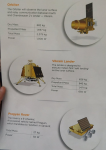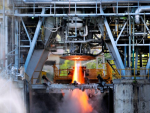I've posted about ISRO's SPADEX experiments before. Here is TOI basically taking info from various forums including this one and passing it off as their own. Seriously you are a news agency bring something new to the table.
India has been quietly working on key technology to enable space station
Chethan Kumar | TNN | Updated: Jun 13, 2019, 22 ..
BENGALURU:
Isro chairman
K Sivan's announcement about India planning its own space station may appear sudden,
but work on a key technology - space docking - without which such a station cannot be made functional has been going on for at least three years now. The project has already got clearance and the department of space has earmarked Rs 10 crore.
Isro has been working on technology that will eventually allow it to transfer humans from one vehicle or spacecraft to another but the immediate goal is to enable refuelling of spacecraft to give them a longer life and also transfer other crucial systems to an existing spacecraft, by transporting another to space.
Space Docking Experiment, or
SPADEX, as Isro calls it, has already seen work on several systems like signal analysis equipment, high-precision videometer for navigation, docking system electronics and real-time decision making for landing systems being done in various stages.
As part of SPADEX, we will "develop and demonstrate the technologies needed for docking two spacecraft (Chase & Target) and to control one spacecraft from the Attitude Control System of other spacecraft in the docked condition," Isro says.
Subsequent to docking, the Chaser and Target will be separated so that they would carry-out their designated experiments with payloads. Further, Isro said: "This technology will be a forerunner to future planetary missions including crew transfer, international participation et al."
Isro has already completed some ground simulations and the work on launching two small spacecraft to test this out in space is in the pipeline. However, with
Chandrayaan-2, Aditya mission and
Gaganyaan on top of Isro's priorities-satellite launches also needs augmentation-serious work on SPADEX may only being after three to four years. "But just like we kept preparing for Gaganyaan quietly, work will go on," one scientist said.
When ready, this technology will also be used for orbit servicing of satellites-as TOI had reported earlier-which will allow Isro to enhance lifespan of satellites, by refuelling them.
Late UR Rao, former Isro chairman and ex-chairman of Isro Advisory Committee, who had nursed ambitions of a space station for India, had earlier told TOI, "Space docking would also be used to transport people to space stations-bring back old people and put in the newer ones-or even send people in to replace equipment on spacecrafts and so on."
Challenges of docking
Sivan, on Thursday ruled out sending Indian astronauts to the
International Space Station - of which India is not a member - and said we will have our own station, which, insiders feel, will add impetus to the docking project.
However, there are multiple challenges Isro will have to overcome before it can attempt this in space. For one, docking will depend on space rendezvous: Isro must be equipped with capabilities wherein the two spacecraft will find each other and remain in the same orbit.
Docking has to be automatic and many of the functions thereon will have to be robotic. There is also the challenge of managing the speeds of each of the crafts when they near each other and to then dock the newer vehicle in a manner that they don't crash or collide into each other.
As per one plan document accessed by TOI, the
Vikram Sarabhai Space Centre(VSSC) will work on rendezvous and docking. "To achieve docking during the final phase of the mission, the relative position and velocity of the target spacecraft and chaser spacecraft has to be brought to zero. To ensure proper alignment of the docking port, the relative angular orientation needs to be precisely aligned," the document reads.
ISRO Latest news: India has been quietly working on key technology to enable space station | India News - Times of India

























